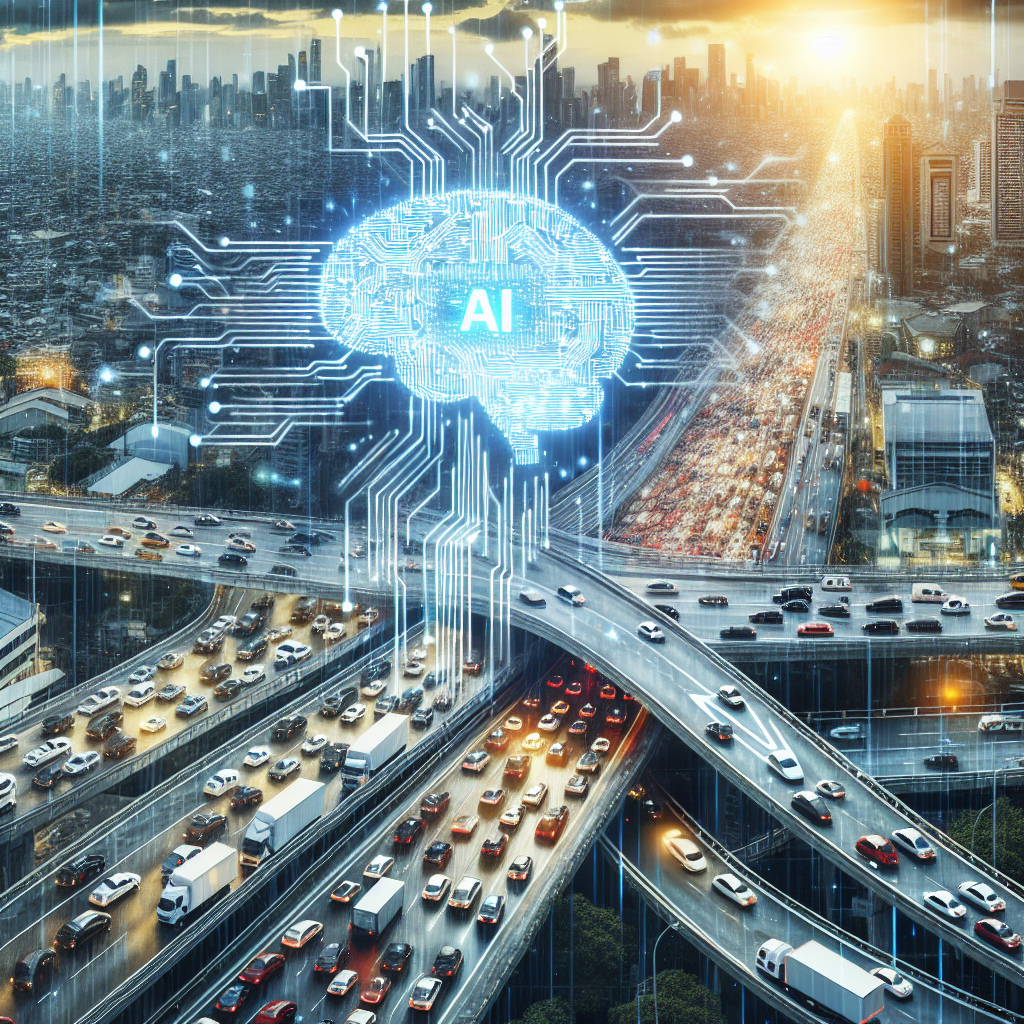Artificial Intelligence (AI) has become an integral part of many industries, including transportation. One area where AI is making a significant impact is in real-time traffic management. Leveraging AI for real-time traffic management in transportation can help improve traffic flow, reduce congestion, and enhance overall safety on the roads.
AI algorithms can analyze large amounts of data from various sources, such as traffic cameras, sensors, and GPS devices, to provide real-time insights into traffic patterns and conditions. By using AI, transportation authorities can make more informed decisions to optimize traffic flow, adjust signal timings, and improve overall transportation efficiency.
One of the key benefits of leveraging AI for real-time traffic management is the ability to predict traffic patterns and congestion before they occur. By analyzing historical traffic data and current conditions, AI algorithms can forecast traffic flow and congestion levels, allowing transportation authorities to take proactive measures to mitigate potential issues. This can help reduce delays, improve travel times, and enhance the overall commuting experience for drivers.
Another advantage of using AI for real-time traffic management is the ability to optimize signal timings at intersections. By analyzing real-time traffic data and adjusting signal timings based on current traffic conditions, AI algorithms can help reduce wait times at intersections, improve traffic flow, and minimize congestion. This can lead to smoother traffic operations, reduced emissions, and improved safety for both drivers and pedestrians.
AI can also be used to improve incident detection and response in real-time traffic management. By analyzing data from various sources, such as traffic cameras and sensors, AI algorithms can quickly detect incidents, such as accidents or road closures, and alert transportation authorities to take appropriate actions. This can help minimize disruptions, reroute traffic, and ensure a prompt response to incidents, ultimately improving overall traffic management and safety on the roads.
In addition to real-time traffic management, AI can also be used for long-term transportation planning. By analyzing historical data and predicting future trends, AI algorithms can help transportation authorities make informed decisions about infrastructure investments, route optimization, and public transportation services. This can lead to more efficient transportation systems, reduced congestion, and improved accessibility for all users.
Overall, leveraging AI for real-time traffic management in transportation offers numerous benefits, including improved traffic flow, reduced congestion, enhanced safety, and more efficient transportation operations. By harnessing the power of AI algorithms, transportation authorities can make smarter decisions, optimize traffic flow, and enhance the overall commuting experience for drivers and passengers.
Frequently Asked Questions (FAQs):
Q: How does AI help in real-time traffic management?
A: AI algorithms can analyze large amounts of data from various sources, such as traffic cameras, sensors, and GPS devices, to provide real-time insights into traffic patterns and conditions. By using AI, transportation authorities can make more informed decisions to optimize traffic flow, adjust signal timings, and improve overall transportation efficiency.
Q: What are the key benefits of leveraging AI for real-time traffic management?
A: Some key benefits of using AI for real-time traffic management include the ability to predict traffic patterns and congestion before they occur, optimize signal timings at intersections, improve incident detection and response, and assist in long-term transportation planning.
Q: How can AI algorithms help in incident detection and response in real-time traffic management?
A: By analyzing data from various sources, such as traffic cameras and sensors, AI algorithms can quickly detect incidents, such as accidents or road closures, and alert transportation authorities to take appropriate actions. This can help minimize disruptions, reroute traffic, and ensure a prompt response to incidents, ultimately improving overall traffic management and safety on the roads.
Q: How does AI contribute to long-term transportation planning?
A: AI algorithms can analyze historical data and predict future trends to help transportation authorities make informed decisions about infrastructure investments, route optimization, and public transportation services. This can lead to more efficient transportation systems, reduced congestion, and improved accessibility for all users.

